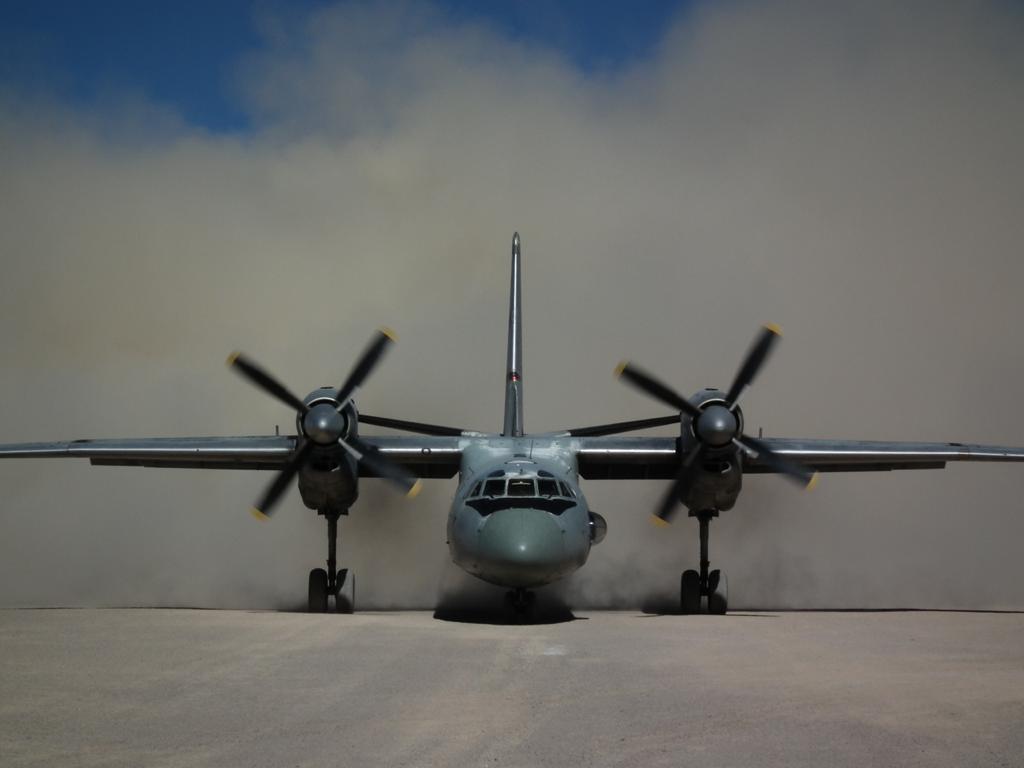Very interesting story (though very long, needs a little patience). Thanks, Rajkumar for sharing with us.
On 31 May 2008, one AN-32 of 48 Sqn, landed at DBO at 0615 hrs on with Group Capt S C Chafekar, CO of 48 Sqn at the controls.
No aircraft had ever landed there (DBO), after the 1962 war with China.
History was indeed repeated after 46 years. A fact quite unknown to the public, Air Marshal PK Barbara, Air Officer Commanding in Chief of the Western Air Command was onboard the AN-32. That is how Air Force Commanders lead, from the front. Here then is the story of Doulet Beg Oldi….
The Need and Decision to Land at DBO
Where Is DBO ? Daulet Beg Oldi is a nondescript small campsite lying at the base of the Karakoram Pass. Travelers on the famed Silk Route may have rested at DBO on their way to Constantinople from China and back. Being at the base of the Karakoram Pass has immense strategic implications, and that is why the Indian Army has been at DBO since the late 50s. Legend says that a caravan of one Daulet Beg was trapped and perished at this spot in a snow storm. Unconfirmed, but suspected by many, gold and precious stones lie buried in the desolate sands of DBO. DBO is adjacent to the Chip Chap river, and lies 8 km South and 9 Kms West of the Line of Actual Control or LAC, with China. The air distance to the Karakoram Pass from DBO is just 10 Kms. Can there be a more strategic place in the Northern most parts of India? That is where DBO is, and it must be supported by air all year round. Therefore the need to land fixed-wing transport aircraft at DBO. It is a bleak landscape with light brown earth, blinding white snow, and azure blue skies, where not a blade of grass grows and is bereft of wildlife. All this at 16,200 ft, where winter temperatures can drop to minus 48 Celsius. The only denizens today are the indomitable officers and jawans of the Indian Army, braving multiple adversities in the form of severe cold, utter loneliness, boredom, monotony, rarefied atmosphere, and poor communication. All they have are their counterparts across the LOC with Pakistan or LAC with China, depending on which way one looks
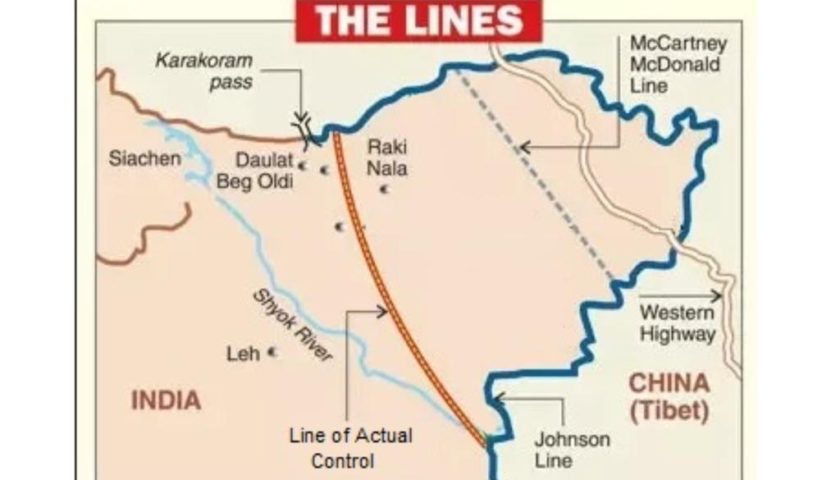
Chandigarh with the AN-32s.
No 48 Sqn was raised on 19 Nov 1959 at Srinagar with Dakotas, later Packets replaced the ‘Goony Bird’, and since 1985 the versatile AN-32. By 2008, the AN-32s had been flying the Ladhak routes for more than 20 years. The aircrew of Camel Sqn, fondly named, “Himalayan Lifeline” were familiar with each peak, valley, river, lake, and the international borders with China and Pakistan. Many had been to DBO on supply dropping missions. The DBO Bowl, its airstrip, the forbidding mountains, and treacherous wind patterns with sudden weather changes were no secret to the gallant airmen of Camel Sqn. Their motto, “ Sahasam Falati Sarvatraha “ meaning Courageous Always Succeed aptly describes the environment in which they serve. 48 Sqn has been intimately involved in many military and civil operations, 1962, 1965, 1971, IPKF, CACTUS, Safed Sagar, Parakram, Bhuj & Tsunami relief, and many more. The Camels were awarded President’s Colours on 27 Feb 2007 by HE Shri APJ Abdul Kalam in full appreciation of the Squadron’s contribution to India.
By the time Gp Capt Chafekar assumed command of 48 Sqn on 1st January 2008, it was time to reactivate DBO, the idea being the brainchild of 48 Sqn. When presented to Air Marshal PK Barbora, AOC-in-C Western Air Command in Feb 2007, the reply was positive with aggressive encouragement and precise guidelines. Why was it necessary to reactivate DBO with the AN-32, one may well ask? First, its strategic position remained critical. Second, expeditious induction and extraction of troops from DBO was desirable. Thirdly, landing the AN-32 at DBO would supercharge the morale of troops who have no exit in winter months. Fourth. Validating the possibility of landing at DBO, in case of an engine failure during supply drop, and if crossing mountains on one engine was not feasible. Indeed, the Fourth demand was a nagging and disturbing doubt for all aircrew in 48 Sqn.
In 1996 an earthquake damaged the DBO airstrip on which the Packet had landed 34 years earlier, restricting operations at DBO to helicopters and supply drop by AN-32. Soil Engineering & Material Testing Division of College of Military Engineering Pune also visited DBO to assess if AN-32s could land. The sad conclusion was that the soil was not compact enough for a landing. Would that become the death knell for landing at DBO? Better sense prevailed, the AOC-in-C a thorough professional commander thought otherwise, we must work towards this he said. He had with him an equally capable Commander of the Chandigarh Air Force Base in Air Commodore SRK Nair. So the work on ‘getting an AN-32 onto DBO’ started in earnest, notwithstanding the loose soil, the short RW, the menacing mountains, nor the proximity of Chinese on the LAC and Pakistanis on LOC.
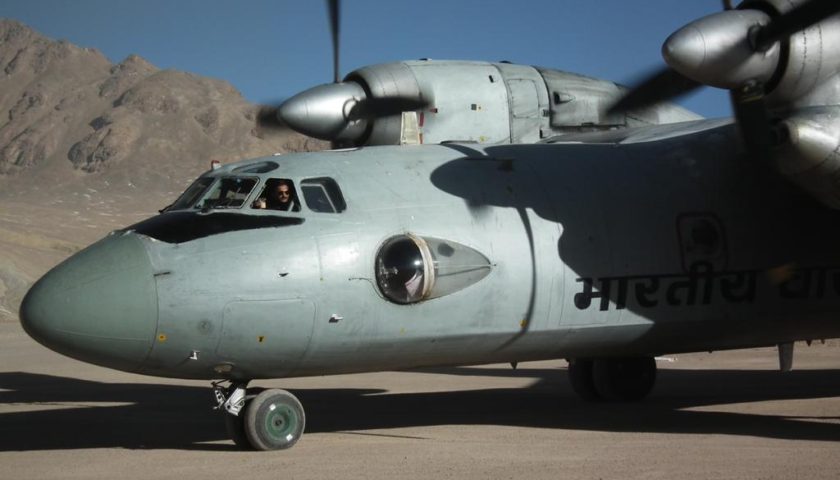
With all this and more, a core team of Groupie Chafekar the CO, Wg Cdr Mahesh Aserkar, Wg Cdr SK Verma, Wg Cdr A Ray, Wg Cdr Rajkumar, Sqn Ldr S.Sharma, and Junior Warrant Officer Verma started a dedicated study of charts, performance graphs, extrapolating data, trying very hard to validate AN-32 performance at high altitude on short and soft ground airstrips at 16200 feet AMSL. There is a big debate on what is the height of DBO. Some altimeters read 16,800 ft, the MI-17 shows 16,700 ft, the AN-32 shows 16,200 ft, and the Packet altimeter read 16,800. It would be prudent to accept 16,500 ft as the height of DBO. The landing speed of the AN-32 would be much higher than the Packet, the aerodynamic braking would be poorer than the Packets, and because the touchdown speed would be higher than the Brake Limit Speed of 250 km/hr, applying brakes must be delayed. What a situation to be in at 16,500 ft on an unprepared runway in the Himalayas. The vagaries of air supply operations in the Himalayas are awesome, every day is different from the previous, neglect is unacceptable and invariably ends in disaster.
Trial Flights, Ground Recce and Recommendations.
Before initiating a ground recce, Squadron crew carried out five trial flights in and around DBO. Circuit patterns were checked, terrain clearances from all directions were proven, single-engine performance during approach and landing were simulated, escape routes in emergencies were determined. Instructions from Air Marshal Barbora were unequivocal about operational imperatives and safety. Do it right, and do it professionally said Nair, himself a veteran of the Himalayas. Flight trials were transcribed into written reports that would one day become SOPs for routine operations into DBO.
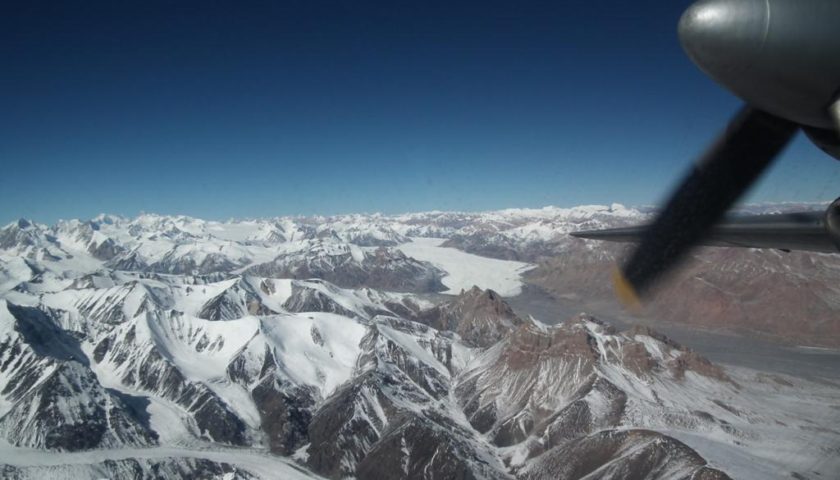
The next and most important step was checking whether the ALG was fit for landing. This was ascertained by One senior pilot Wg Cdr Rajkumar Kesarkar along with Major Sharma of 235 Engineer Regt who conducted a ground recce on 26 March 2008. This is what they found. The airstrip was 2200 metres long and 53 metres wide. The surface was unpaved, with loose pebbles at many places, the strip had no markings, and the chosen parking area needed strengthening. At many places, the PSP sheets would have to be hammered in to obviate tyre burst. Kesarkar and Sharma went up in a helicopter and once again flew the circuit pattern. Very confidently, Kesarkar reported back to his CO Chafekar, that a landing was very much possible after the Engineers repaired and strengthened the airstrip and the parking area. Not to be left behind, Major Sharma confirmed that his boys would complete the job in time, and he would personally be at DBO to receive the AN-32, and true to his word he was. When an Army officer says he will be there, he honours that promise.
Doing It Together.
Jointmanship is the cardinal, and most certainly the fundamental requirement for success in war or peace. Liaison between Western Air Command, Northern Army Command, 14 Corps HQs at Leh, IAF Chandigarh, and 48 Sqn was a constant feature in achieving a successful landing at DBO by AN-32. Troops of 235 Engineer Regt under command of Maj Sharma started their work in full earnest only on 01 May 08. Road rollers strengthened and hardened the strip. Wonder how the road rollers got there? Readers will be amazed to learn that the Engineers of the Indian Army & Border Roads Organisation, with the Air Force, can together, move any road building and civil works equipment anywhere in India. Earthquake in Bhuj, Tsunami in Andamans, floods in Assam, rail disaster in Kerala, cyclones in Orissa, or to rebuild an airstrip at 16,500 feet deep into the Himalayas at 35 North and 77 East, the joint manship within the Armed Forces is remarkable, more so at the functional level.
At DBO the Centre Line was painted, jerry cans were installed and numbered as the Distance To Go Markers (DTGM) along the Western edge, used engine oil was liberally sprayed and at times poured to bind the soil and harden it. Those uninitiated and ignorant of what it takes to just walk at 16,500 ft should marvel and unhesitatingly applaud the capability of the Indian soldiers and their officers, to undertake strenuous labor at those heights. Where nothing grows, oxygen is scarce, where oxygen is scarce, breathing is difficult, where breathing is difficult, hard labour is well nigh impossible. The glory of the Indian jawan is that he consistently achieves the impossible. Kesarkar carried out two more ground recce of DBO before declaring ALG fit for landing. On 21 May Air Cmde Nair and Groupie Chafekar went to DBO to inspect the airstrip. The surface was ready with all repairs done satisfactorily. Doulet Beg Oldi was ready for another fixed-wing transport aircraft, Air Mshl Barbora was advised and unbeknown to most others, he fixed Saturday 31 May 2008 as TL Day. The TL naturally stands for Trial Landing.
Crew Selection and Parameters for the Trial Landing
The choice for TL with AN-32 fell onto Groupie Suryakant Chafekar, CO of 48 Sqn. A true veteran with 6500 hrs under his ‘seat’, he had done a trial landing with AN-32 at Tuting airstrip in Arunachal. A flying instructor, he had made ‘trial landings‘ his forte, having been involved in trial landings at Kargil and Hanle in Ladhak, Campbell Bay in Andamans, and Agatti in Lakshwadeep, including landing at Leh on RW 25 which is one of the trickiest approach & landing. With Chafekar was Wg Cdr Mahesh Aserkar, the Flt Cdr. Another pioneer in awkward operations, he was the first to land at Port Blair after the tsunami ravage, and also went as lead aircraft into Campbell Bay and Carnicobar. Tsunami relief demanded night operations in the Andamans, and who else but Aserkar was the captain for that first-ever night mission over the Bay of Bengal. To navigate them from Chandigarh into the DBO bowl was Wg Cdr Ray. Varied experience, a pioneer on the Air to Air Refueler IL-78, a participant in Multinational exercises in Alaska and South Africa, and holder of A category on both IL-76 & AN-32. Finally to the man who would monitor the power plants generating only 50 kg/ sq cm torque and operating at just 66% thrust at 16,500 ft AMSL. It was JWO Ram Niwas Verma, with 4200 hrs at his fingertips, all of them on the AN-32, exposure to Arunachal, Ladhak, Andamans, and was a crew of a mission in Afghanistan to rescue trapped ITBP jawans on 08 Jan 2008. To add ‘brass’ to this crew, they had on board Air Mshl Pranab Barbora, the AOC-in-C of WAC, he was not going to sit in Delhi when the action took place at DBO.
So What About the AN-32? The ‘kite’ selected was K-2755. Extrapolation of Performance Graphs revealed WAT limitations and Scheduled Performance for Field Length available at 16,500 ft altitude. Since the APU, used for starting main engines would not perform above 14,000 ft, the engines would be kept running on the ground, and fuel for that was to be factored. Tyre pressure was reduced for the soft soil conditions, and that the landing speed would be about 280 km/hr. This was much higher than the usual speed of 200 km/hr and higher than the Max Braking Speed of 250 km/hr. A higher TAS at altitude increased the Radius of Turn for the same Turning Bank Angle. DBO was predominantly unprepared and “kutcha” with a very small part having PSP, and a bumpy landing followed by an equally bumpy take-off was expected. The LCN of AN-32 is much higher than that of the Packet, what damage would occur to the soil, how would the Single Isolated Wheel Loading (SIWL ), impact the airstrip? High mountains, at least 1500 meters above ground level, surround DBO on all but the Eastern side, and after take-off in a Southerly direction, an immediate Right-Hand Turn is a correct way out, from there to Gupshum, onto Tri-Junction, and then either to Thoise or Leh. To keep the AUW as low as possible, Chafekar in consultation with Air Cmde Nair decided that K-2755 would take-off from DBO and land at Thoise for refueling. The IAF’s AN-32s have no Third Engine Jet Pack to help out in case of a “ one engine out” situation. Finally the factors of, unpredictable weather with strong winds, mountain waves, and sudden gusts on the ground. For Chafekar and his crew, these were the factors that would determine how they executed the trial landing and indeed the “trial take-off”. With bags of experience spilling out of each aircrew’s pockets, they knew what was to be done, and how to do it. The constant encouragement they received from Air Marshal Barbora in Delhi, and the stimuli and sound advice they got from their Base Commander Nair, boosted their confidence.
Saturday 31 May 08 dawned and 48 Sqn was a busy place by 0300 hrs, when all else in India were fast asleep. Early take-offs are not unusual for transport units, but with the AOC as well as the AOC-in-C floating around, what was happening? Obviously not too many were aware of the trial landing. To reach DBO within acceptable temperatures and get as much power out of the engines, take-off from Chandi was planned at 0450 hrs.
Air Marshal Barbora had unobtrusively arrived the previous evening and was briefed by Air Cmde Nair and Groupie Chafekar. Nair had introduced a second AN-32 into the mission which was flown by Wg Cdr Rajkumar. This was for three reasons, first to orbit at about 500 ft above DBO and monitor activity from across the LAC. Second to be able to report any emergency with the trial landing, and finally, to capture on video, the approach, and landing for posterity and training of aircrew. Nair, a transport stalwart, had pioneered night operations by IL-76 into Leh and Thoise, thus creating an unprecedented Troop Induction Force Multiplier capability hitherto absent in Ladhak. Nair had been an examiner on both Il-76s and AN-32s during his younger days. For Chafekar and crew, having such a man overhead was confidence plus, as it was for the AOC-in-C. Forward area weather reported cloudy skies but fit for landings and drops.
It is pertinent for the readers to appreciate that weather forecasting facilities in Ladhak are still quite unreliable despite the technology available. It is the first flight from Chandigarh, called’ “Weather Recce” that reports back the actual weather experienced, and it is the captain of the weather recce who clears further flights for landings and or supply drops. So the two AN-32s, first with Chafekar, second with Nair, were to be the “weather recce”. Air Marshal Barbora quietly entered K- 2755 just as the engines were starting and settled down in the standard seats for jawans. No fashionable stuff for this AOC-in-C he had ordered. Both AN-32s were airborne in quick succession, climbing into a grey navy blue sky over Chandigarh, heading Northward for the Himalayas. Bright sunshine greeted the aircraft as they made their way past Tso Morari, Kar Tso, across the Indus heading Northwards, East of Leh, over Khardung La, at Tri Junction, past the terminal moraines of Siachin glacier and into the DBO bowl. A sheet of clouds at about 20,000 ft hid most of the valley, but given the experience of the crew, and their intimate knowledge of the geography of DBO, both Chafekar and Rajkumar easily descended below clouds and Chafekar set up his circuit for Left-Hand Turns onto runway 01. The landing would be Northward. Rajkumar established an orbit just behind and above him, with Sqn Ldr Satish Sharma and Flt Lt Shantanu recording K-2755 with their video cameras.

The reader must appreciate that at circuit height the mountains appear frighteningly close. When the AN-32 would descend at DBO for a supply drop, it would be a ‘clean’ configuration and at para-dropping height, now K-2755 was well into the bowl, landing gear extended, flaps down, and each mountain peak well above it. Chafekar and his crew brought K-2755 on the final approach for RW 01 at DBO. As calculated, the Rate of Descent was twice that at Chandigarh, Chafekar knew that the first attempt had to be made into a success. He had not made all these preparations for failing to land.
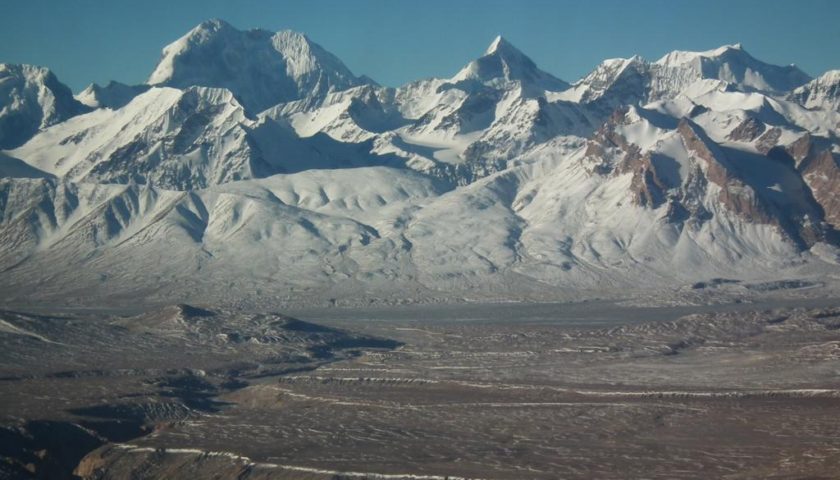
” On trial was the “izzat” of not just 48 Sqn and its CO, but of Nair, AOC Chandigarh, Air Mshl Barbora, AOC-in-C Western Air Command, Indian Air Force, and thus of the Indian Armed Forces”
The strategic value of routinely operating AN-32s from DBO was immense, and both militarily and diplomatically this trial landing was going to be a much-needed boost. Besides, anyone who has interacted with Army troops in remote regions knows the electrifying salutary impact on morale, when a transport aircraft is there to bring them in, and more so, take them home. Chafekar was flying much more than just an AN-32 into DBO.
The aircraft roared across 01 dumb-bell under his steady hands at 280 km/h, throttles were chopped, and exactly at 0614 hrs on 31 May 08, history had been made when this 27,000 kgs AN-32 touched down on DBO. On the ground were many senior Army officers including Lt Gen PC Bhardwaj, GOC-in-C Northern Command, along with the Corps Commander of 14 Corps. The landing run was pretty bumpy, the aircraft stopped well in time, even though braking was delayed, and at 19 dumb-bell Chafekar turned around and stopped, keeping his engines running since the APU would not function at this height.
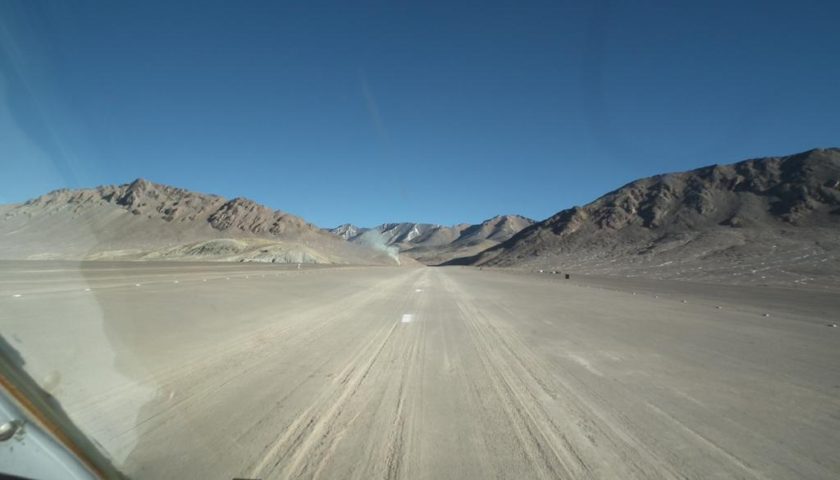
Barbora came out, met Bhardwaj, sweets were presented to the Army unit in full appreciation of a most magnificent job done in so short a time at these heights. Barbora would later tell the press corps, “This place is so high and bereft of oxygen, that my cigarette lighter refused to light up”. The reader can well imagine what effect very low oxygen levels have on humans. All this while, a very pleased Air Cmde Nair was overhead monitoring the air space, his photographers furiously filming away. The incisive deliberations had paid off well, having left nothing to chance was the way professionals in the Air Force work, and Nair was indeed one such thoroughbred professional.
After about 15 minutes it was time to find out if a take-off was also easily executable. The books had said yes, let’s see how K-2755 would behave? Chafekar lined up on 19 dumb-bell, opened full power which generated just 65% of sea level torque, brakes off, a huge cloud of dust churned up, and a not too encouraging acceleration ensued. Airspeed Indicators register late at altitude and is well known to pilots, but Chafekar wanted a speed to lift off, he got it, and gently eased K-2755 off DBO, and like Raje had 46 years earlier, immediately turned Right to avoid the hill in front, and climbed away, with Nair now leading the way back to Thoise. Onboard K-2755 was Lt Gen Bhardwaj, invited by Air Marshal Barbora for a ride back.
Aftermath.
Jubilations were in order and were indulged. What is pertinent is that a scientific, truly professional methodology was prosecuted in the planning and execution of the trial landing of K-2755 at DBO. From the initiation of the idea of activating DBO for AN-32s, through recces, ground inspections, rebuilding of the airstrip, establishing a monitor aircraft overhead, selecting the crew, extrapolating performance graphs, and not forgetting the presence of the AOC-in-C on board, was planned and deliberated. For the Army jawans at DBO the “Annabattis” as they have christened the AN-32s, were now right at their doorstep instead of flying overhead and dropping parachutes. Soon regular flight will be flown into DBO, confirming that reinforcements can be inducted swiftly and assuredly, a morale booster for the Army, and strategists. For the international student of matters military, this trial landing is to be noted not as an aggressive posture, but as a confirmation of India’s consistent policy of defending her lands with certainty and determination. DBO is not a launching pad for offensive operations as some may aver, it is not so, it cannot be so. But maintaining DBO by landing AN-32s is indeed the fulcrum for the defense in that sector, and that is what the Indian Air Force has achieved along with the Army. Jointmanship at it’s best.
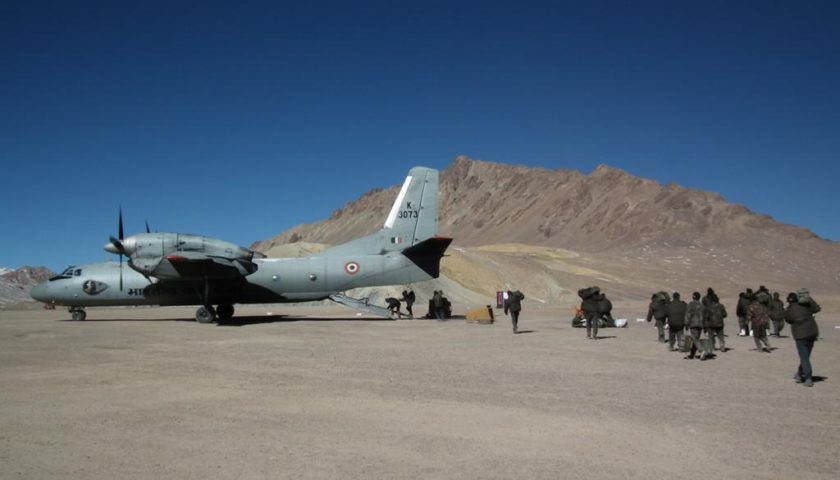
Related article: Landing at world’s highest airstrip at 16500 ft: Daulat Beg Oldie. Click here to read more.
